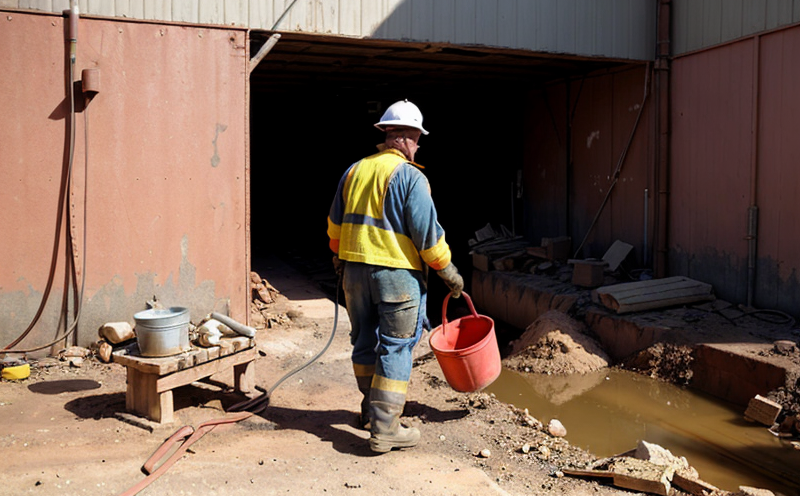NIOSH 7400 Asbestos Fibre Counting in Mines Testing
The NIOSH (National Institute for Occupational Safety and Health) method 7400 is a critical tool used to measure the concentration of asbestos fibers in air samples collected from mining environments. This service is essential for ensuring that occupational health standards are met, thereby protecting miners' respiratory systems.
Mining operations often involve exposure to various hazardous materials, including asbestos. Asbestos, although once widely used for its thermal and acoustic properties, has been linked to serious lung diseases such as asbestosis, mesothelioma, and lung cancer when inhaled. The NIOSH 7400 method is specifically designed to identify and quantify asbestos fibers in airborne samples collected from mining sites.
The testing process involves the collection of air samples using specialized sampling devices that are placed at strategic locations within mines where there is a higher likelihood of asbestos exposure. After collecting these samples, they are sent to our laboratory for analysis. The method 7400 utilizes phase contrast microscopy (PCM) or polarized light microscopy (PLM), depending on the type and concentration of fibers being analyzed.
Once received in our lab, the samples undergo rigorous preparation steps which include careful preservation, drying, and grinding to ensure accurate counting under the microscope. Highly trained technicians then count individual asbestos fibers using advanced optical microscopes equipped with specialized software that enhances visibility and accuracy.
The results from this testing are not only crucial for maintaining compliance with OSHA (Occupational Safety & Health Administration) regulations but also provide valuable data regarding workplace safety practices. By identifying areas of high fiber concentration, mine operators can implement targeted interventions such as improved ventilation systems or personal protective equipment distribution programs to reduce risks associated with asbestos exposure.
Accurate detection and quantification of asbestos fibers play a vital role in safeguarding the health of miners while complying with stringent occupational safety standards. Our laboratory adheres strictly to NIOSH guidelines ensuring reliable results that can be trusted by all stakeholders involved including regulatory bodies, employers, employees, and researchers alike.
Scope and Methodology
| Aspect | Description |
|---|---|
| Sampling Procedure | Air samples are collected using a standardized sampler placed at various points within the mine. The sampler collects air over a specified period, typically 15 minutes. |
| Sample Preparation | The collected air samples undergo drying and grinding processes before microscopic examination to ensure accurate fiber counting. |
| Analysis Method | Phase Contrast Microscopy (PCM) or Polarized Light Microscopy (PLM), depending on the type of fibers present, is used for precise identification and quantification. |
| Data Interpretation | The number of asbestos fibers per cubic centimeter (cc) of air is calculated based on the microscope counts. Results are reported according to NIOSH criteria. |
Customer Impact and Satisfaction
Mines benefit from peace of mind knowing they meet stringent occupational safety standards set by OSHA.
Employers gain access to actionable data allowing them to make informed decisions about improving workplace conditions.
Employees appreciate the enhanced assurance that their health is being prioritized through rigorous testing protocols.
Regulatory bodies receive reliable evidence supporting compliance efforts, leading to greater trust in mining operations.
International Acceptance and Recognition
The NIOSH 7400 method is widely accepted globally due to its robustness and reliability. It aligns with international standards such as ISO 16985, which ensures consistency across different countries.
Many mining companies worldwide rely on this service for their compliance needs, demonstrating its universal applicability in occupational health testing.





